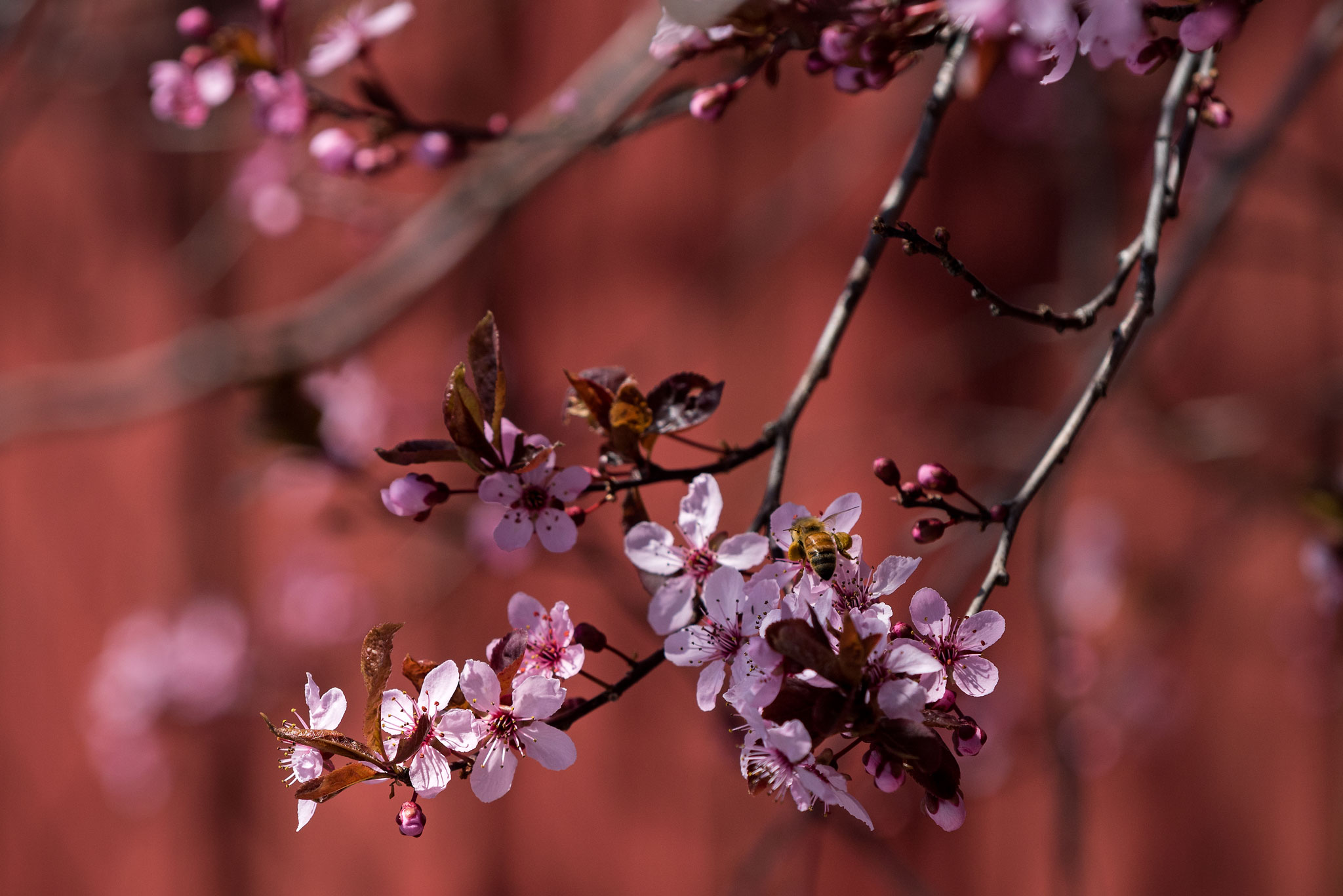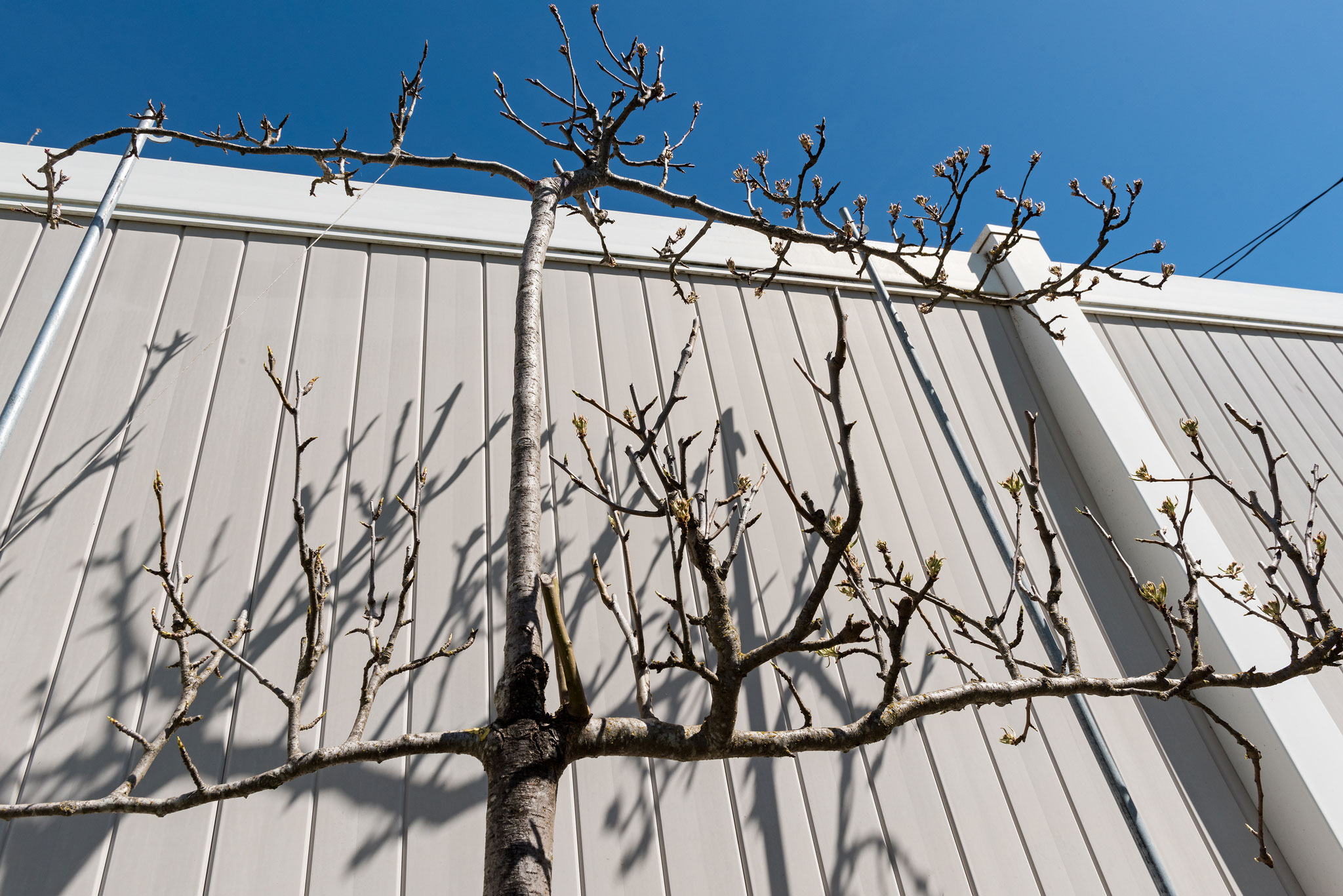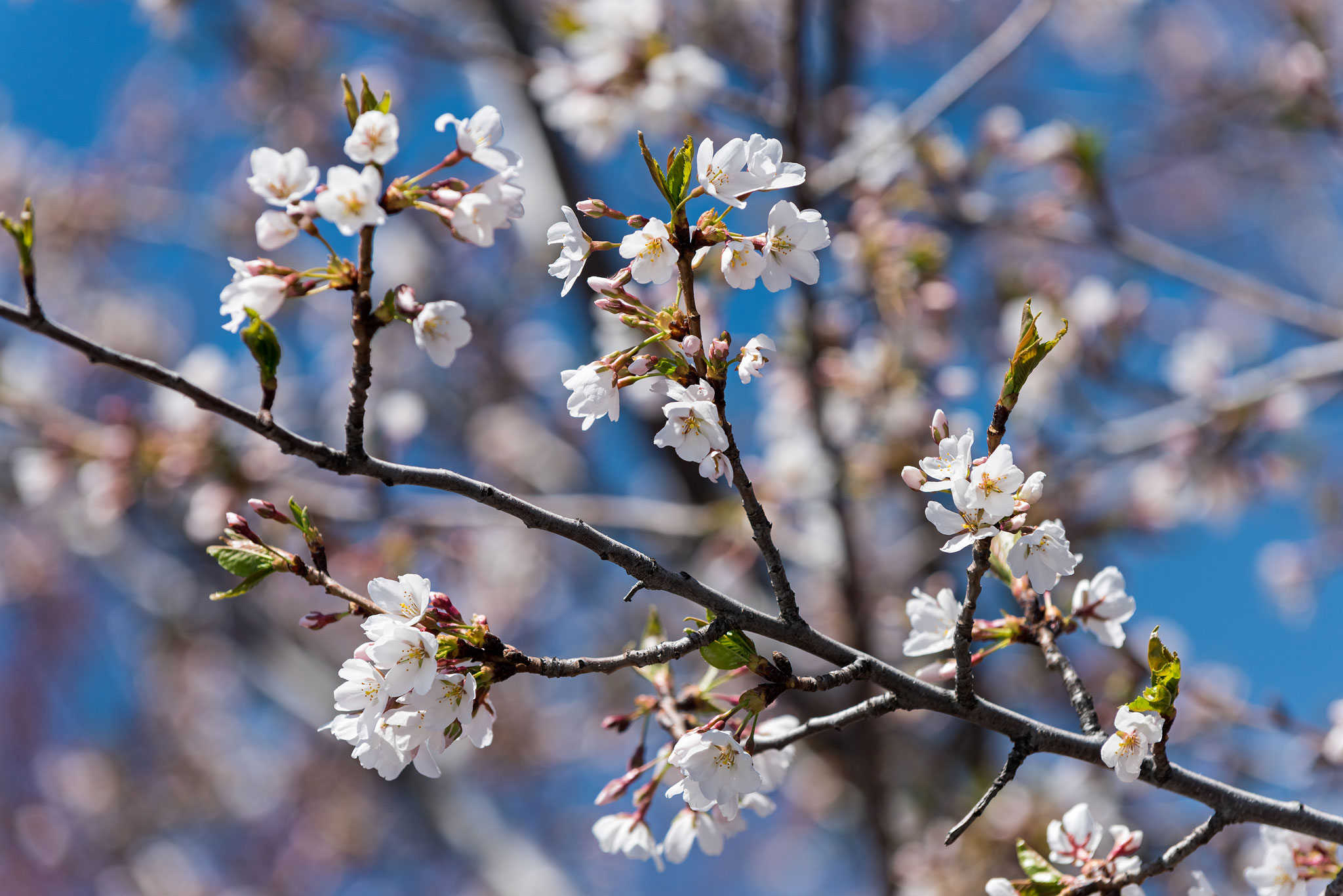I am continually amazed by the proliferation of fruit trees across the Inland Northwest. One of the most common is the purple leaf plum, which has dark purple leaves, tiny deep red fruit and an abundance of rosy pink blossoms in the spring. Many fruit trees are pleasant to look at in bloom. However, without care, they can become a nuisance or blight. Fruit tree care is an extensive conversation, but here are a few basics to start you down the right branch.

» Planting & Training
The Inland Northwest is located in plant hardiness zones 4 and 5, which means we have a short growing season. Many varietals of apples, cherries, apricots, peaches, pears, nectarines and plums have adapted to our climate, and a few thrive. Due to our harsh environmental conditions, fruit trees are typically grown from rootstock, not seeds or pits. Apricots, peaches and nectarines grow better in Washington than in Idaho. Russian apple varieties, tart cherries and European and Japanese plums are hardiest in this region. Also, be aware some trees need to be planted with similar varieties in order to properly pollinate.
Choose a rootstock with a 1-inch diameter (measured at 6 inches from the ground). A smaller tree will be easier to transplant but will grow more slowly. A larger one may suffer shock when transplanted. Once the tree is in the ground, create a mulch zone within 5 or 6 feet around the trunk. Wrap the trunk with tree fabric to protect it from the cold.
Story continues after a quick message from our sponsor below.
Training a fruit tree is guiding its growth in a direction, pattern or spacing. Many times you can buy a tree for planting that’s trained in the Espalier style (a flat two-dimensional form) with both apples and pears grafted into the same trunk.
» Thinning & Pruning
Most trees take about four to six years to produce a decent quantity of hearty fruit. Even then, you might have slow-bearing years. In the spring, during full bloom and a heavy production year, pluck the blossoms until you have 4 to 6 inches between blooms. This will keep fruit bearing fairly consistent.

Pruning is planning, cutting and trimming to direct the health and production of a tree. In poorly pruned trees, upper limbs overhang lower ones, stunting their growth. Pruning, however, can be a delicate undertaking. A couple wrong chops can threaten the life of a tree. Use a pruning guide or hire an arborist.
» Feeding & Harvesting
Your trees need watering every 10 days to 2 weeks. Keep the soil moist but not waterlogged. Proactive fertilization of fruit trees is important in our short-season area. Apply in early spring through July. Check with your local nursery for the best organic fertilizer.
» Bugs & Pesticides
Fruit trees are susceptible to bugs. The most common are the maggots or “worms” of the codling moth and the apple and cherry thorn skeletonizer. Codling moths lay eggs on leaves and fruit. Skeletonizer moths lay eggs on the undersides of leaves. Setting traps and barriers are somewhat effective. Neem, kaolin clay and a few other natural sprays seem to have more success.
Proper tree care is vital to fruit actually ripening. If you take the time to protect, train, thin, prune, feed and nurture your trees, you will reap a sweet, juicy harvest, year after year. N
By S. Michal Bennett
Photography By Joel Riner
As Featured In: 2018 Summer/Fall CDA Edition




